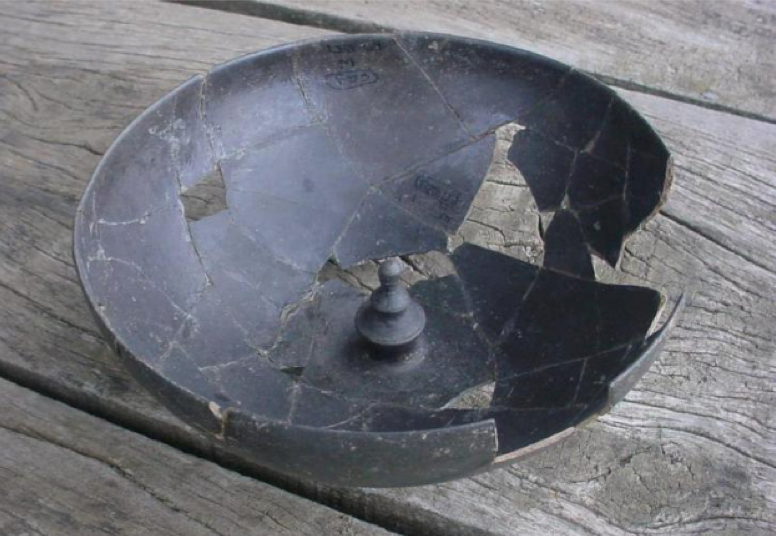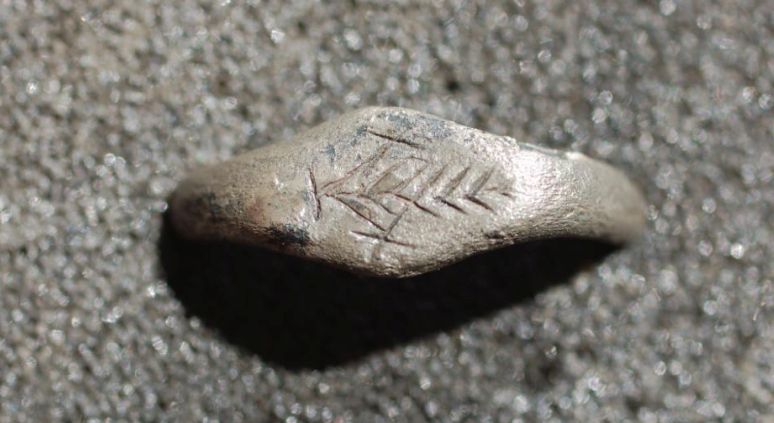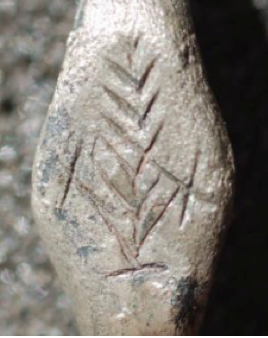Excavations and Finds at Lunt Roman Fort
Lunt Fort excavations
The details below offer a summary of the excavations for those interested. More details can be found from these websites (citations needed).
- In 1960-1 an excavation on the E and W slopes located defensive ditches and part of the interior of the fort was excavated.
- Excavation in 1966-7 indicated a second period of occupation within the late Neronian-early Flavian period (ca. AD 60-79). Period 2 is ca. AD 70-90. Evidence was found for the W, E and possibly for the N defences, with associated rampart-ovens; also for a gateway, granary, barrack-block and a further building. Finds included coins, Samian, brooches, coarse ware, and military bronzes.
- In 1966 an excavation was undertaken with the intention of restoring the fort and opening it to the public.
- In 1967 a trench was opened immediately behind the E rampart and other slip trenches were excavated to locate the defences. A long narrow timber building with a porch (?) and a rock-cut water tank was uncovered together with beam-slots. Finds included coins, Samian, coarse pottery and military bronzes.
- Further Excavations 1968-71. Period 2 was more closely dated to ca. AD 64-70? The E gate was fully excavated, but S and W gates can only be inferred. Several buildings were excavated including a gyrus, principia, praetorium, two granaries and six barrack blocks. In addition two further Periods were distinguished.
- 1968-71. A number of distinct phases within period 1 (cAD 60-64) were distinguished. In each phase `barrack-like' buildings existed. The Period 1 fort was larger than its successor and the defences have not yet been located, but it evidently enclosed a larger area than the Period II fort. On the E side the rampart was possibly turf without a ditch. In addition to barrack-blocks a granary was located at the NE corner of the fort.
- Further excavations after 1971 produced further detailed evidence on the structure of the fort and altered the dating of Phase II to ca. AD 64-77/8. Further work was conducted on a number of buildings within the fort. In addition a probable stable building was uncovered. The cumulative evidence of horse fittings, stabling, an extensive metalworking area, adequate granary and storage space, the gyrus and the size of the praetorium suggests a cavalry presence at the fort at this time. There is also possible evidence for cavalry training which could indicate the drafting of Britons into the Roman army.
- Lunt fort western defences were examined 1983. The ditch of Period III and buildings sequence of Periods I and III were investigated.
- Excavations between 1988 and 1991 in the NW part of the fort found considerable plough disturbance of Roman deposits. However, observations in a sewer trench in 1991 produced the first possible evidence of Period I defences in the form of the bottom of a ditch and a layer of decayed turf. Remains of agricultural buildings possibly associated with Period I were also discovered in the excavations. The line of the Period 2 rampart and part of the intervallum road was traced, and a circular clay oven was discovered in 1991.
- Excavation in 1990-1 partly emptied the defensive ditches and revealed features suggesting a later palisade. There were also vestiges of occupation outside the defences. The line of the western defences continued to be uncovered as they met the NW corner of the fort.
- Most of the work undertaken in the 1996 season was concentrated on the area to the W of the gravel bank, particularly the inner and wide ditches that form the western defences. It was concluded that the Period II inner ditch does follow the line of the gravel bank and its profile varies considerably; from a defensive ditch to the S to a U-shape, almost a U-shape, and then finally a fairly shallow ditch in the area of the present Excavations. These changes may be due to topographic variations along the ditch's course. It seems that post-pits found along the edge of the gravel bank may well have formed a double row of timber emplacements, possibly part of a rampart structure. However, the relationship of the feature to the inner ditch would cause problems in the phasing and so it may be that the post pits are actually part of the Period III or even Period IV rampart.
- Work carried out during the 1997 season was again concentrated on the area to the W of the gravel bank, investigating the relationship between the outer, inner and wide ditches. Work in a section revealed that the wide ditch cut through the outer ditch and is therefore later. A sherd of medieval green glaze pot was found in the upper fill of the outer ditch, dating the wide ditch to the medieval period.
- Excavations in 1997 revealed two post holes. Deposits probably representing a demolished or collapsed wall. An ephemeral curvi-linear feature and sub-triangular pit were also found.
- Excavations on the Western defences 1998. Showed medieval activity as well as Romano-British.
- Excavations of Period I Western defences in 1999 revealed the remains of what may have been a kiln.
- In 2001 a team of Canadian students unearthed a fragment of Roman Samian pottery and a Nero's head coin dating from AD 65. Other finds have included a ring etched with a palm leaf. This type of design symbolized victory and was worn by successful gladiators, but the XX may link the ring to a legionary from XX Valeria Victrix according to Dr Grigsby.
Lunt Fort Finds
The Lunt is also remarkable for the exotic items found there. One of the most astonishing is perhaps the plain black colour-coated bowl, with a central finial, from the post-Boudican fort at the Lunt, for which there are two known parallels, one in Gaul and the other in Spain.

One exceptional object was a bowl of black burnished ware of eggshell thinness polished to a fine luster, with a central pedestal or finial in the interior, a feature which could be a copy of a finial on late Hellenistic silver vessels from Italy.
The evidence for the presence of the XX legion at the fort, either before or after Boudica’s defeat, might just be suggested in a silver ring unearthed at the site during excavation. The ring with a palm leaf engraved on the face has been taken to suggest the presence at the fort of a winning gladiator – as the palm leaf as a symbol of victory was sometimes worn by such men.

But a closer look at the ring reveals something more remarkable – the possible engraving of XX, one X either side of the palm. Could this ring have belonged to a legionnaire from the XX? It is also known that the XX were given the honorary title of Legio vigesima Valeria Victrix. Some suggest that the title was earned defeating Boudica, others that they were given the title earlier (AD 6-9) for their part in quelling a revolt in Illyria (modern Albania). Either way, the palm as symbol of victory might be a symbol for Valeria Victrix.

[Of note is the fact that if this is the case, supposing that the XX were merely passing through, this might suggest the earlier granting of the name rather than the victory over Boudica].
